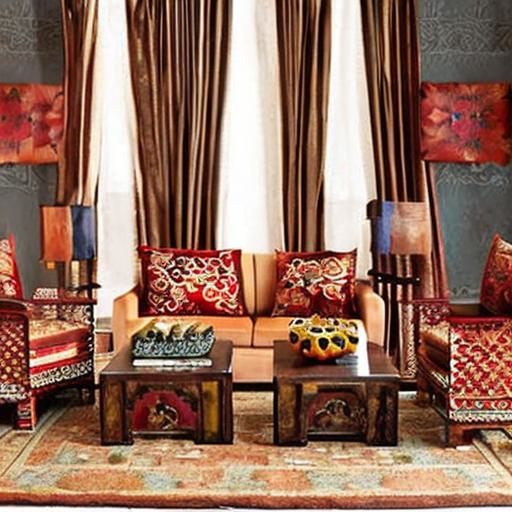
India is a land of rich cultural heritage and vibrant traditions, and its traditional furniture designs are a true reflection of this diversity. The artistry and craftsmanship that go into every piece of Indian traditional furniture is awe-inspiring, making it an integral part of the country’s cultural identity.
Get more details by seeing the video tutorial on Indian Traditional furniture
From ornate carvings to intricate patterns, these designs showcase the skill and creativity that have been passed down through generations. In this article, we delve into the captivating world of Indian traditional furniture designs, exploring their history, significance, and timeless appeal.
So get ready to embark on a journey that will leave you enthralled by the beauty and elegance of these extraordinary creations from India’s past.
1. Antique wooden furniture from India
Antique wooden furniture from India holds a significant place in the realm of traditional Indian furniture. The craftsmanship and intricate designs of these pieces are a testament to the rich cultural heritage of the country. From intricately carved woodwork to vibrantly painted motifs, every detail exudes charm and elegance.
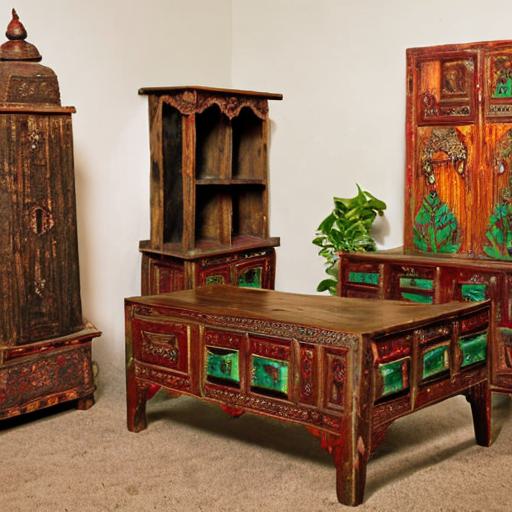
One of the most popular types of antique wooden furniture from India is the traditional jali work. Jali, meaning lattice or net in Hindi, refers to the delicate carving done on wooden panels that resemble a network pattern. These panels are often used in doors, windows, and cabinets, adding a touch of sophistication and creating beautiful play of light and shadows.
Another notable aspect of traditional Indian furniture is its versatility. From ornate beds with intricately carved headboards to elaborately designed chests and cabinets adorned with brass fittings, there is something for every taste and aesthetic preference. Each piece tells a unique story through its design elements, showcasing different regional influences across India.
In conclusion, antique wooden furniture from India offers an extraordinary glimpse into the timeless beauty and craftsmanship that has been passed down through generations.
Whether you are an enthusiast looking to add a touch of history to your home or someone intrigued by cultural artifacts, exploring these hidden gems will undoubtedly leave you awe-inspired by their remarkable artistry.
2. Handcrafted Indian Traditional Furniture Designs
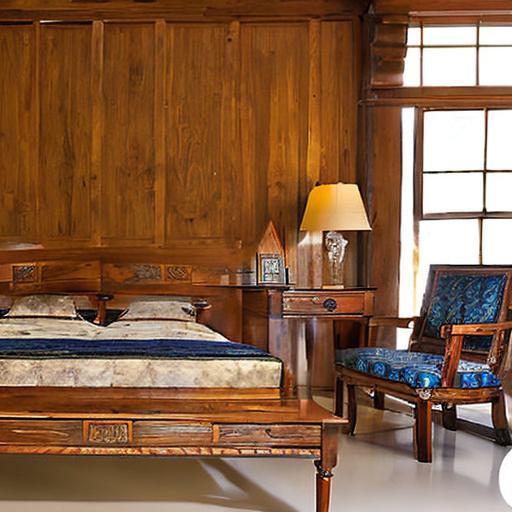
One of the hidden gems of Indian culture lies in its exquisite traditional furniture designs. These designs have been passed down through generations and reflect the rich heritage and craftsmanship of the country. Traditional Indian furniture is known for its intricate carvings, vibrant colors, and attention to detail.
Each piece is handcrafted by skilled artisans who take pride in their work. From ornate wooden cabinets to intricately carved chairs and tables, traditional Indian furniture showcases the skill and artistry of these craftsmen. The designs often incorporate elements from nature such as flowers, animals, or geometric patterns inspired by ancient scriptures.
What sets apart traditional Indian furniture is not only its aesthetic appeal but also its functionality. Each piece is designed with a purpose – be it storage, seating or decorative – making it both beautiful and practical.
Whether you are looking to add a touch of elegance to your home or want to embrace the cultural heritage of India, traditional Indian furniture designs offer a unique and timeless option that will surely stand out in any space.
3. Ethnic Indian Traditional Furniture Designs
Ethnic Indian furniture styles encompass a rich and diverse range of traditional designs that reflect the cultural heritage of India. These unique furniture pieces showcase intricate craftsmanship, vibrant colors, and exquisite details that are deeply rooted in Indian traditions.

From ornate carvings to hand-painted motifs, every piece tells a story and adds a touch of elegance to any space.
Traditional Indian furniture is known for its use of natural materials such as wood, cane, and bamboo. The designs often feature elaborate patterns inspired by nature or religious symbols like lotus flowers or peacocks.
Some popular examples include intricately carved wooden cabinets with brass accents, antique-style chests embellished with mother-of-pearl inlay work, and handwoven cane chairs with vibrant cushions.
The designs of Indian furniture also vary across different regions in the country. For instance, Rajasthan is famous for its opulent and heavily adorned pieces that incorporate mirror work and colorful textiles.
In contrast, the South Indian style focuses on simplicity and functionality with minimalistic yet elegant forms. Whether it’s a majestic bed frame or a delicate coffee table, ethnic Indian furniture styles offer timeless beauty that effortlessly blends tradition with contemporary aesthetics.
4. Carved wood Indian Traditional Furniture Designs
Carved wood furniture in India is an exquisite form of traditional Indian furniture that showcases the intricate craftsmanship and rich cultural heritage of the country. The art of carving wood has been practiced in India for centuries, and it has evolved into a unique style that is recognized worldwide.
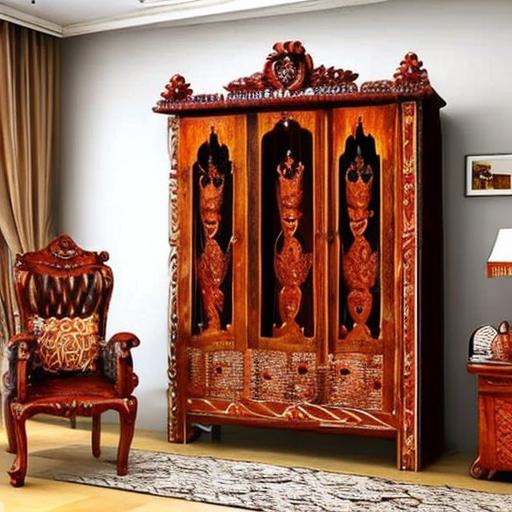
Traditional Indian furniture features intricate carvings depicting scenes from mythology, floral patterns, and geometric designs. Skilled artisans use specialized techniques to create these beautiful pieces, working meticulously by hand to bring out the finest details.
One of the most popular types of carved wood furniture in India is the intricately designed wooden chairs. These chairs are not only functional but also serve as stunning decorative pieces that add elegance to any space. The backrests and armrests are adorned with ornate carvings, often featuring traditional motifs or symbols representing different aspects of Indian culture.
Another prominent example of carved wood furniture in India is intricately crafted wooden beds. These beds feature elaborate headboards and footboards showcasing detailed carvings that tell stories from ancient literature or depict celestial beings like gods and goddesses. Each piece is a work of art, demonstrating the skill and creativity passed down through generations.
In conclusion, carved wood furniture in India represents a significant aspect of traditional Indian design and craftsmanship. It captures the essence of Indian culture through its intricate carvings and artistic expressions. These remarkable pieces not only serve as functional furniture but also stand as timeless works of art that reflect the rich heritage and traditions deeply rooted in Indian society.
5. Intricate patterns on Indian furniture
Intricate patterns on Indian furniture are a distinguishing feature of traditional Indian furniture designs. These patterns often showcase the rich cultural heritage and artistic traditions of India. The craftsmanship and attention to detail that goes into creating these intricate patterns are truly remarkable.
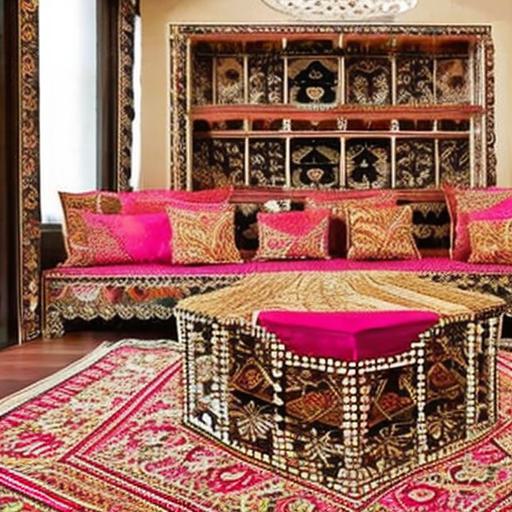
One common pattern seen on Indian furniture is the floral motif. Flowers have always held great significance in Indian culture, representing beauty, fertility, and prosperity. These floral patterns can be found on various pieces of furniture such as cabinets, chairs, and tables, adding a touch of elegance and charm to any space.
Another popular pattern found on traditional Indian furniture is geometric designs. These intricate geometric patterns are often inspired by ancient architectural motifs like mandalas or jali work. They not only enhance the visual appeal but also add a sense of symmetry and balance to the overall design.
Overall, the intricate patterns seen on Indian furniture reflect the country’s rich cultural heritage and skilled craftsmanship. Each piece tells a story through its unique design elements, making it a true hidden gem in the world of traditional furniture designs.
6. Unique craftsmanship in traditional Indian furnishings
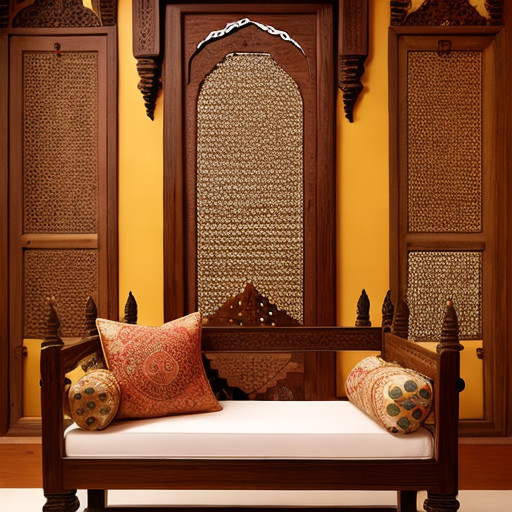
Traditional Indian furnishings are renowned for their unique craftsmanship, which showcases the rich cultural heritage of India. These exquisite furniture designs are a testament to the skilled artisans who have honed their craft over generations.
One of the standout features of traditional Indian furniture is its intricate carving work. Artisans use specialized tools and techniques to meticulously carve intricate patterns and motifs into wood, creating stunning pieces that are truly one-of-a-kind.
Another distinctive characteristic of traditional Indian furnishings is their vibrant use of colors and textures. From bold hues like deep reds and vibrant yellows to earthy tones like browns and greens, traditional Indian furniture adds a splash of color to any space.
Additionally, many pieces feature detailed inlays made from materials such as bone, mother-of-pearl, or metal accents, further enhancing their visual appeal.
Furthermore, traditional Indian furniture often incorporates elements inspired by nature and spirituality. From ornate floral patterns symbolizing growth and prosperity to depictions of deities that evoke a sense of divinity, these designs reflect the spiritual beliefs deeply ingrained in Indian culture.
This attention to detail not only makes each piece visually stunning but also imbues them with cultural significance and meaning.
In conclusion, traditional Indian furnishings showcase remarkable craftsmanship through intricate carvings, vibrant colors, and meaningful design elements inspired by nature and spirituality.
7. Traditional motifs on Indian cabinets and wardrobes
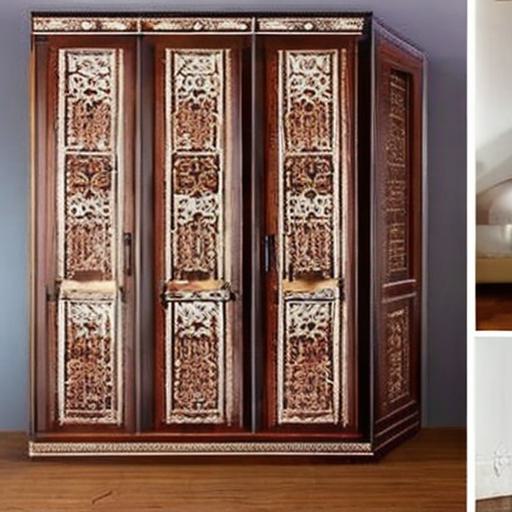
Traditional motifs on Indian cabinets and wardrobes play a significant role in showcasing the rich heritage and cultural artistry of India. These intricate designs are often hand-carved by skilled artisans, reflecting the traditional craftsmanship that has been passed down through generations.
The motifs used on these furniture pieces range from floral patterns to geometric shapes, each carrying its own symbolic meaning.
One commonly seen motif is the lotus flower, which holds great spiritual significance in Indian culture. It represents purity, enlightenment, and divine beauty. Another popular motif is the peacock, symbolizing grace, elegance, and immortality. The peacock’s vibrant colors are often depicted using intricately carved wooden panels or detailed paintings.
Additionally, traditional Indian cabinets and wardrobes may feature other motifs such as elephants or paisley patterns. Elephants are considered sacred animals in India and represent strength, wisdom, and good fortune.
Paisley patterns have their roots in Persian art but have become an integral part of Indian design over time. They add a touch of elegance and sophistication to these furniture pieces.
Overall, the presence of traditional motifs on Indian cabinets and wardrobes serves as a visual testament to the country’s rich cultural heritage while adding a unique charm to any living space they adorn.
8. Wooden swings and jhoolas in traditional Indian homes
Wooden swings and jhoolas hold a significant place in the traditional Indian homes, reflecting the rich cultural heritage of the country. These intricate pieces of furniture are not just functional but also artistically designed, showcasing the craftsmanship and attention to detail that is characteristic of traditional Indian furniture.
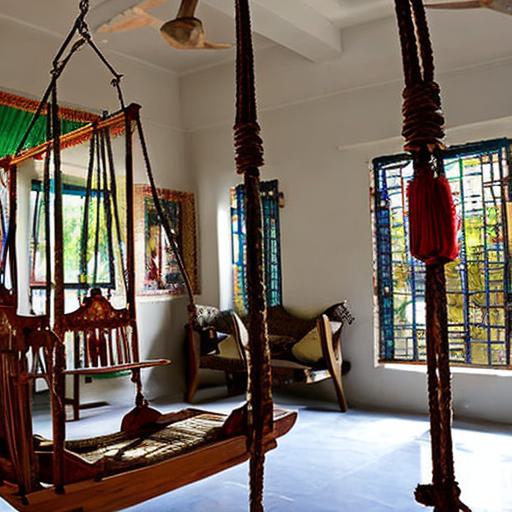
In traditional Indian homes, wooden swings or jhoolas are often found in the courtyard or veranda area. They serve as a relaxation spot for family members to unwind and spend quality time together. These swings are usually made from solid wood and adorned with intricately carved designs, depicting mythological stories or nature motifs.
The jhoola designs vary across different regions of India, each reflecting the unique artistry and cultural influences prevalent in that particular area. From Rajasthan’s ornate jharokha style swings to Kerala’s elegant teakwood jhoolas, each piece tells a story of its own.
The addition of these wooden swings adds warmth and charm to traditional Indian homes, creating a cozy corner for relaxation while preserving centuries-old design traditions.
9. Artistic fusion of modern and traditional elements in Indian furniture
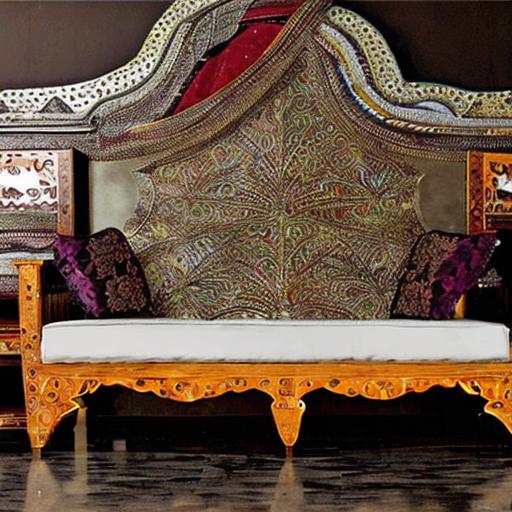
The artistic fusion of modern and traditional elements in Indian furniture has breathed new life into the world of interior design. With an emphasis on preserving cultural heritage while embracing contemporary aesthetics, designers have skillfully blended traditional Indian furniture designs with modern sensibilities.
These exquisite pieces showcase the rich craftsmanship and intricate detailing that are synonymous with Indian culture, while incorporating sleek lines, minimalist forms, and innovative materials to create a harmonious balance between tradition and modernity.
One striking example of this fusion is seen in the incorporation of traditional motifs and carvings into contemporary furniture designs.
Intricate patterns inspired by ancient scriptures, flora, fauna, or geometrical shapes are expertly carved onto wooden surfaces or intricately woven into fabric upholstery. This infusion of traditional artistry adds depth and character to otherwise simple and clean-lined modern furniture pieces.
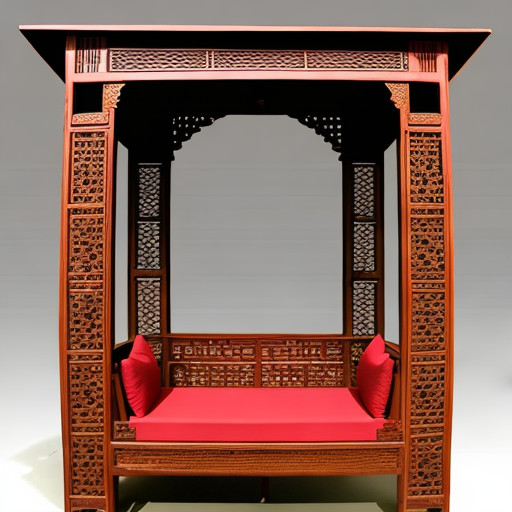
Another aspect of this artistic fusion can be observed in the use of vibrant colors and bold finishes in traditional Indian furniture designs. While classic pieces often feature earthy tones such as browns and reds, modern interpretations introduce bolder hues like blues, greens, yellows, or even metallic shades.
The juxtaposition of these vibrant colors against the intricate carvings or hand-painted details creates a visually stunning effect that effortlessly blends tradition with contemporary design sensibilities.
Conclusion
In final conclusion, the article has shed light on the hidden gems of Indian culture through its exploration of exquisite traditional furniture designs. Traditional Indian furniture is known for its intricate craftsmanship and unique designs that have been passed down through generations.
These furniture pieces not only serve a functional purpose but also act as works of art that reflect the rich cultural heritage of India.
The article highlights how traditional Indian furniture designs are characterized by their use of natural materials such as wood, cane, and bamboo. The attention to detail in these designs is evident in the intricate carvings, ornate patterns, and vibrant colors used to adorn each piece.

Additionally, traditional Indian furniture often incorporates symbolism and reflects religious beliefs or regional influences.
Overall, this article serves as a reminder of the beauty and historical significance embedded within traditional Indian furniture designs. It encourages readers to appreciate the craftsmanship and cultural value behind each piece while also considering them as potential additions to their own homes or spaces.
By showcasing these hidden gems, the article offers insight into an important aspect of Indian culture that may otherwise go unnoticed by many.





